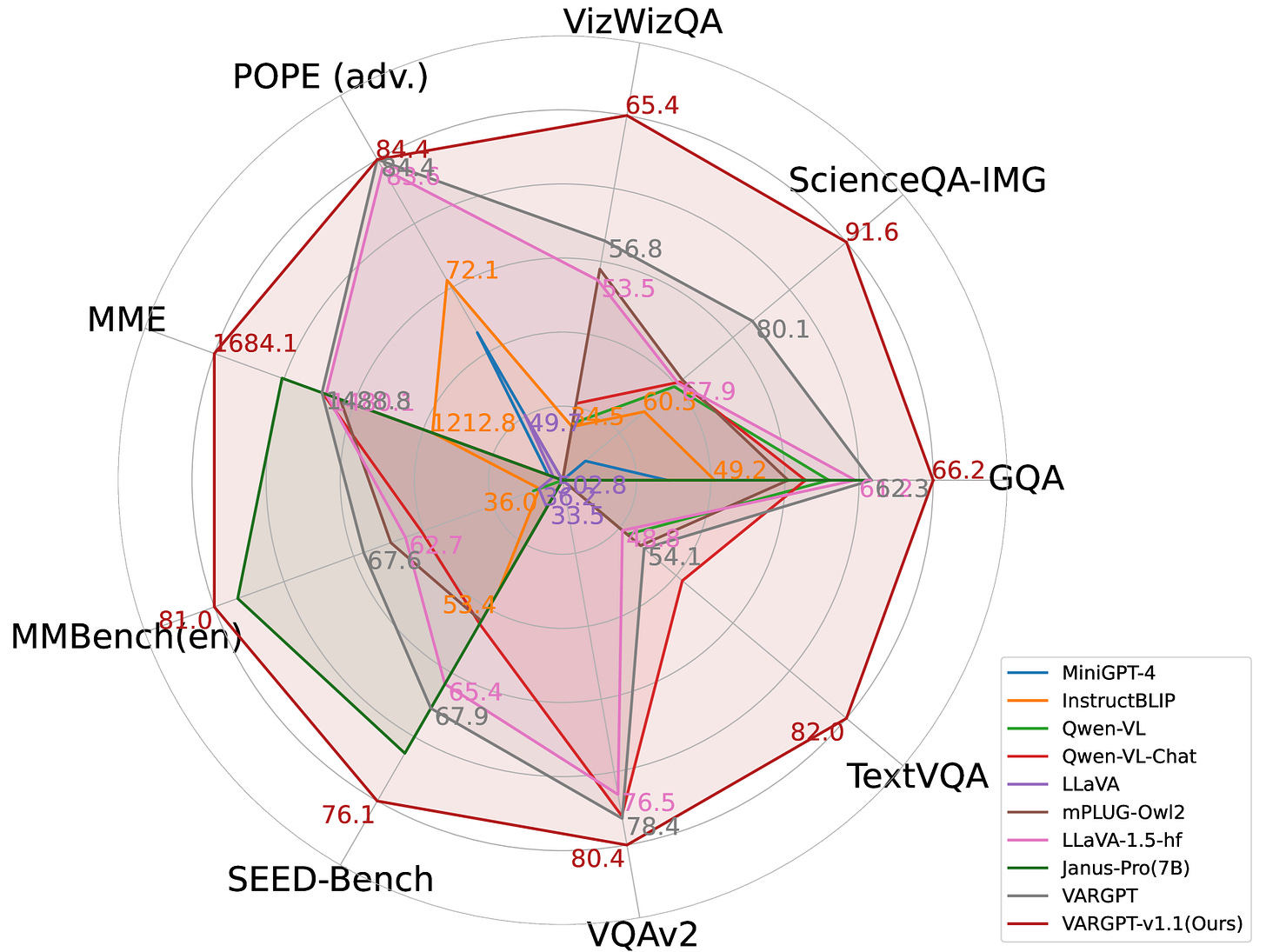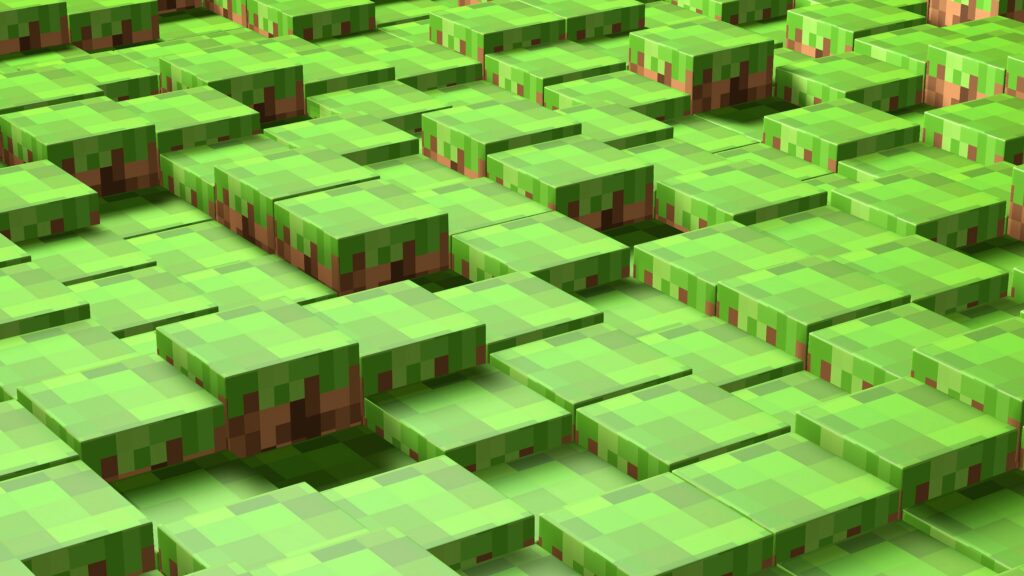VARGPT-v1.1 builds upon the original VARGPT framework to advance multimodal AI. This updated model retains the dual paradigm approach: using next-token prediction for visual understanding and next-scale generation for image synthesis. The model represents a significant evolution in unified visual autoregressive systems.
Four key technical innovations distinguish VARGPT-v1.1:
-
A multi-stage training paradigm combining iterative visual instruction tuning with reinforcement learning through Direct Preference Optimization (DPO)
-
An expanded visual generation corpus of 8.3 million instruction pairs (6× larger than v1.0)
-
Enhanced visual comprehension through migration to the Qwen2-7B backbone
-
Architecture-agnostic fine-tuning enabling visual editing capabilities without structural modifications
A comparative analysis showing VARGPT-v1.1’s performance across visual comprehension benchmarks. The model demonstrates significant superiority over compared baselines across all metrics.
These innovations have enabled VARGPT-v1.1 to achieve state-of-the-art performance in both visual understanding and generation tasks, while demonstrating emergent capabilities in image editing without requiring architectural modifications.
The Landscape of Multimodal AI: Where VARGPT-v1.1 Fits In
Recent advancements in multimodal AI have achieved breakthroughs in both comprehension and generation. Multimodal Large Language Models (MLLMs) excel at cross-modal understanding, while Denoising Diffusion Models dominate visual generation through iterative refinement.
Three primary paradigms have emerged in the pursuit of unified frameworks:
-
Assembly Systems – integrating LLMs with diffusion models
-
Pure Autoregression – architectures predicting visual tokens
-
Dual-diffusion Models – with parallel generation mechanisms
Comparison of different model architectures for visual tasks. VARGPT-v1.1 follows a purely autoregressive multimodal approach, using next-token prediction for comprehension and next-scale prediction for generation.
Current implementations struggle with representation conflicts between understanding and generation tasks. While models like TokenFlow unify tokenization, their visual generation and understanding pipelines remain largely decoupled.


![Comparison of different model architectures, where, 'AR' denotes autoregressive, while 'VAR' signifies visual autoregressive. We present a comparative analysis of architectures designed for comprehension-only tasks, generation-only tasks, and unified comprehension and generation, alongside our proposed VARGPT-v1.1 an VARGPT [14] model. Our VARGPT-v1.1 and VARGPT are conceptualized as purely autoregressive multimodel model, achieving visual comprehension through next-token prediction and visual generation through next-scale prediction paradigms. Comparison of different model architectures, where, 'AR' denotes autoregressive, while 'VAR' signifies visual autoregressive. We present a comparative analysis of architectures designed for comprehension-only tasks, generation-only tasks, and unified comprehension and generation, alongside our proposed VARGPT-v1.1 an VARGPT [14] model. Our VARGPT-v1.1 and VARGPT are conceptualized as purely autoregressive multimodel model, achieving visual comprehension through next-token prediction and visual generation through next-scale prediction paradigms.](https://substackcdn.com/image/fetch/w_1456,c_limit,f_auto,q_auto:good,fl_progressive:steep/https%3A%2F%2Fsubstack-post-media.s3.amazonaws.com%2Fpublic%2Fimages%2Fca4c7d97-c2b5-49a2-9ee6-b51b6290f41e_1661x401.png)

